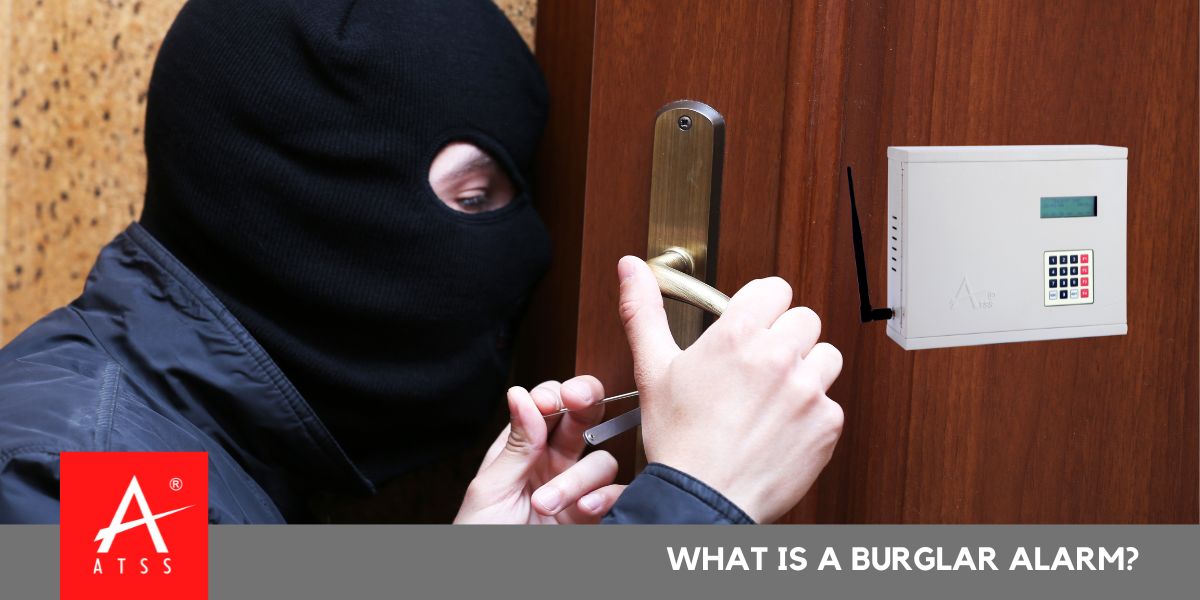WHAT IS A BURGLAR ALARM?
A burglar alarm is a security system that detects unauthorized entry into a property. As a result, it alerts the owner or security personnel immediately.. These alarms play a crucial role in home and business security, helping to deter intruders and notify authorities in case of a break-in.
CENTRAL CONTROL UNIT
The control panels available in the market range from small compact types that incorporate a hooter/siren and can accommodate a few different types of sensors (detectors) to more advanced types capable of performing complex functions. Advanced burglar alarm control panels can:
- Automatically dial a phone or cellular device to convey a pre-recorded message about an intrusion.
- Trigger a local audio-visual alarm.
- Operate with user codes for arming and disarming.
- Switch to a built-in power supply in case of a power failure.
- Be controlled remotely via an infra-red or Radio Frequency (RF) remote.
For larger burglar alarm installations, zones help manage multiple sensors. Consequently, each zone links to one or more sensors, making it easier to identify the exact area where an intrusion has occurred.
ARMING / DISARMING SYSTEM
Arming a Burglar Alarm means switching it on, and disarming means disabling it. Moreover, you can perform these functions using:
- A simple switch
- A keypad with a password
- An RF remote or an infrared remote
- A key-operated electric switch
Keypad-based systems allow users to enter a secure password for enhanced security, ensuring only authorized individuals can control the burglar alarm system.
POWER BACK-UP
All burglar alarm control units should have a sufficient battery backup to ensure uninterrupted operation during power outages. Chargeable batteries degrade over time, requiring replacement approximately every 18 months. The required battery capacity depends on the number of devices connected and the duration of backup needed.
ZONES IN A BURGLAR ALARM SYSTEM
A security alarm system is divided into zones to identify specific intrusion areas. This helps in quick and effective security responses.
1 – DELAY:
- Entry/exit doors are assigned to this zone.
- A timer delay is programmed to allow users time to disarm the system before the alarm is triggered.
2 – INSTANT PERIMETER:
- Moreover, doors that are not used frequently, such as backyard or balcony doors, are also included.
- If an intrusion is detected, the alarm triggers instantly.
3 – INTERIOR:
- This includes motion detectors inside the building.
- The system is programmed to delay activation if the user enters through an authorized delay door.
4 – WINDOW SECURITY:
- Windows and selective entry points are monitored.
- Users can selectively arm or disarm specific doors/windows for customized protection.
TYPES OF ZONES IN A BURGLAR ALARM
Different types of zones in a burglar alarm system include:
- Burglary Zones: Detect unauthorized entry.
- Hold-Up Zones: Designed for emergencies, can be audible or silent.
- Medical Zones: Trigger emergency medical assistance.
- Panic Zones: Alert security personnel instantly.
Some security alarm systems connect to an auto dialer, which silently alerts authorities without warning intruders.
INFORMATION INPUT & OUTPUT
Modern burglar alarm control panels feature LCD or LED displays to provide real-time system status. Users can enter access codes and receive visual or audible feedback on alarm activation.
Most systems verify user authenticity through password protection. Keypad-based access ensures security and eliminates the need for multiple physical keys.
The burglar alarm control panel also manages outputs such as sirens, hooters, and emergency auto dialers that notify security personnel or law enforcement.
SECURITY ALARM ACCESSORIES
For comprehensive protection, burglar alarm systems incorporate various sensors and accessories, including:
- Motion detectors
- Door and window sensors
- Glass break detectors
- Smoke and heat sensors
- Panic buttons
Choosing the right accessories ensures complete security coverage based on your specific needs. You can set up small installations using a DIY approach, but for larger systems, seek professional assistance to optimize cost and efficiency.
A well-planned burglar alarm system enhances safety, deters criminals, and provides peace of mind by securing homes, businesses, and commercial properties effectively.

